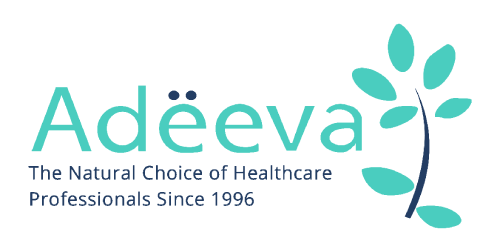
LMU 50 – Optimizing Blood Pressure Assessment: A Vital Step in Preventing Misdiagnosis
Source: Journal: Canadian Family Physician (March 2017)
Lifestyle Medicine Update (April 9, 2017)
Introduction
In a world where medical science continuously evolves, a critical study featured in the Canadian Family Physician journal of March 2017 has exposed a concerning statistic: a staggering 20% of patients receiving treatment for high blood pressure have been misdiagnosed. This alarming revelation underscores the urgency of refining blood pressure assessment methods to ensure accurate diagnoses and appropriate treatments. The pivotal role of accurate blood pressure measurement in identifying hypertension cannot be understated. This article delves into the findings of this study and explores the implications for both patients and healthcare professionals.
The Study’s Essence
Published in the Canadian Family Physician journal on March 1, 2017, this study casts a spotlight on the diagnosis of high blood pressure (hypertension) within the Canadian healthcare landscape. The study, authored by Janusz Kaczorowski and conducted at the University of Montreal Hospital Research Centre (CRCHUM), unfurls a disconcerting reality: 20% of individuals undergoing hypertension treatment are erroneously prescribed medication due to improper blood pressure measurement techniques.
Janusz Kaczorowski, the lead author of the study, attributes this phenomenon primarily to the flawed method of blood pressure measurement. As the study’s insights suggest, this flawed measurement technique has the potential to lead healthcare providers astray, instigating unnecessary medical intervention and inadvertently placing patients on an unwarranted medication regimen.
Beyond Manual Methods: The Diagnostic Dichotomy
Traditionally, blood pressure measurement was conducted manually, relying on a sphygmomanometer and a stethoscope. However, this conventional approach has its drawbacks. Over the past two decades, automatic electronic measuring devices, known as oscillometric devices, have emerged as a more accurate alternative. These automated devices negate the shortcomings of the manual technique and provide a higher degree of precision.
In a notable development, the Canadian Hypertension Education Program (CHEP) Guidelines of 2016 advocate for the supremacy of electronic measurement over its manual counterpart. The oscillometric devices, by obviating the “white-coat syndrome,” wherein blood pressure elevates due to the stress of a clinical environment, offer a clearer and more reliable reflection of a patient’s true blood pressure status.
Addressing Methodology Discrepancies
The study discloses an unsettling reality: despite the availability of superior measurement technology, 52% of Canadian family doctors persist in employing the manual method. A mere 43% have embraced the automated devices, a transition endorsed by both research and guidelines. This disparity underscores the pressing need for healthcare providers to recalibrate their diagnostic approach to align with contemporary advancements.
To glean accurate blood pressure measurements through manual means, a patient requires a 12- to 15-minute period of relaxation before the reading. However, the average duration of a physician visit—typically spanning 10 minutes—presents a practical constraint. This temporal mismatch can precipitate artificially elevated blood pressure readings due to heightened stress and anxiety.
Implications for Cardiovascular Health
Understanding the significance of precise blood pressure assessment extends beyond the realm of diagnostics; it holds profound implications for cardiovascular health. The CHEP Guidelines emphasize that modifying health-related behaviors, such as adhering to a healthy diet, engaging in regular physical activity, curtailing sodium intake, and stress management, constitutes a potent strategy to prevent and treat high blood pressure. Given that hypertension represents a substantial global risk factor for mortality and disability, the value of accurate diagnosis and optimal management cannot be overstated.
Empowering Patients and Professionals
For individuals seeking to navigate the labyrinth of blood pressure management, this study furnishes a series of actionable steps:
- Prioritize Accurate Assessment: Endeavor to maintain blood pressure within recommended ranges, with ideal readings below 130/80 mmHg.
- Embrace Technology: Whenever feasible, advocate for blood pressure measurement utilizing automated devices, as endorsed by the latest guidelines.
- Elevate the Diagnostic Experience: If manual measurement persists, patients are urged to engage healthcare providers in discussions regarding the establishment of a serene environment for a relaxed pre-measurement period.
- Uphold Medication Regimens: For patients diagnosed with high blood pressure, meticulous adherence to prescribed medication regimens is pivotal, as hypertension is a significant risk factor for a gamut of health conditions.
- Lifestyle Modification: Embark on a journey of proactive lifestyle modification encompassing dietary choices, physical activity, stress management, and other factors. This approach, backed by the World Health Organization, wields the potential to curtail the need for medication in a substantial proportion of cases.
Conclusion
The Canadian Family Physician journal’s study serves as a clarion call for healthcare providers and patients alike to recalibrate their approach to blood pressure assessment. Amidst the dynamic landscape of medical advancements, embracing automated measurement methods emerges as a prudent step, fostering accurate diagnoses and tailored interventions. By adhering to the CHEP Guidelines and embracing contemporary technology, the realm of blood pressure management witnesses a transformation that promises improved patient outcomes and empowered healthcare practices.
References
- (Main Reference): Janusz Kaczorowski, Martin G. Myers, Mark Gelfer, Martin Dawes, Eric J. Mang, Angelique Berg, Claudio Del Grande and Dragan Kljujic. How do family physicians measure blood pressure in routine clinical practice? Canadian Family Physician. 2017, 63;3
http://www.cfp.ca/content/63/3/e193
Eat Smart, Live Well, Look Great,
Dr. Meschino

Dr. James Meschino
ABOUT THE AUTHOR
Dr. James Meschino, DC, MS, ROHP, is an educator, author, and researcher having lectured to thousands of healthcare professionals across North America. He holds a Master’s Degree in Science with specialties in human nutrition and biology and is recognized as an expert in the field of nutrition, anti-aging, fitness, and wellness as well as the author of numerous books.


